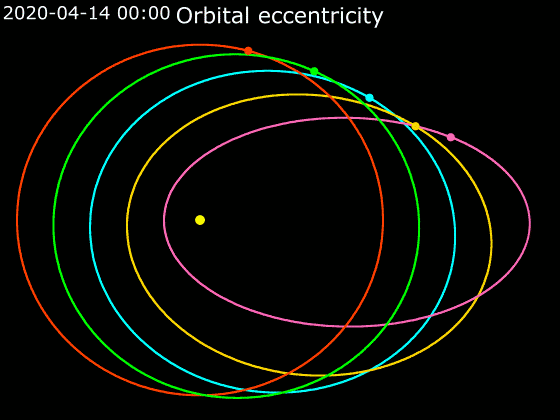Jupiter and Earth don’t really seem to interact much, but the gas giant may have helped the Earth (or at least life on Earth) quite a bit. For example, its massive gravity scatters asteroids and comets speeding toward the vicinity of our planet. This is both a good thing now and when the Earth was forming, as it ensured that our pale blue dot had just the right amount of water and land.
But Jupiter could have done even more for us.
Among all planets we have found to date, Earth certainly is the most hospitable to life. However, a new study by the University of California, Riverside (UCR), suggests that Earth isn’t as habitable as it actually could be. The UCR team found that it would be even more habitable if Jupiter’s orbit were to just shift a bit.

Researchers at the university constructed an alternative Solar System using detailed models based on data from the Solar System as it is currently understood. An increase in the eccentricity of Jupiter’s giant orbit was found to have significant effects on the shape of Earth’s orbit in this hypothetical system.
“If Jupiter’s position remained the same, but the shape of its orbit changed, it could actually increase this planet’s habitability,” said Pam Vervoort, UCR Earth and planetary scientist and lead study author.
If a planet travels in a perfect circle around its star, then the distance between them will remain constant. However, most planets orbit their stars in an oval shape known as an “eccentric orbit.” More heat is radiated from the star as the planet orbits closer to it, which in turn affects the climate.
The Earth? It’s okay
Thanks to current conditions, the Earth’s surface can support a wide variety of life at temperatures between 0 and 100 degrees Celsius (32 and 212 degrees Fahrenheit). Though if the Solar System’s largest planet were to shift, Earth’s orbit could become more eccentric, allowing some areas to get closer to the sun than others. The temperature range in which life can flourish on Earth’s surface would expand as parts of it currently below freezing would rise to a more comfortable level.
“Many are convinced that Earth is the epitome of a habitable planet and that any change in Jupiter’s orbit, being the massive planet it is, could only be bad for Earth,” Vervoort said. “We show that both assumptions are wrong.”
While scientists don’t yet have the technology to definitively determine whether or not exoplanets are habitable, researchers have been compiling a list of worlds that merit further investigation for a variety of reasons.
One reason a planet could be hospitable to life is the exoplanet’s distance from its host star: it needs to be in the Goldilocks zone: close enough that liquid water can exist, but far away that it doesn’t evaporate.
Another factor is whether or not the exoplanet is rocky like Earth, Venus, or Mars based on its size and mass. Over time, it has become more plausible that the presence of a gas giant comparable to Jupiter in the same system could serve as a useful indicator of habitability. There do, however, appear to be exceptions to this rule.
Previous studies have shown that perturbing Jupiter’s orbit could rapidly destabilize the Solar System. More simulations though have shown that the opposite is possible, which will help limit the gas giant orbits that either aid or hinder habitability.
Researchers now want to apply the UCR finding in the search for habitable exoplanets.
“The first thing people look for in an exoplanet search is the habitable zone, the distance between a star and a planet to see if there’s enough energy for liquid water on the planet’s surface,” said Stephen Kane, UCR astrophysicist and study co-author. “Having water on its surface is a very simple first metric, and it doesn’t account for the shape of a planet’s orbit, or seasonal variations a planet might experience.”
This new finding could open up a whole new set of doors for future signs of life.
The paper was published in The Astronomical Journal.










